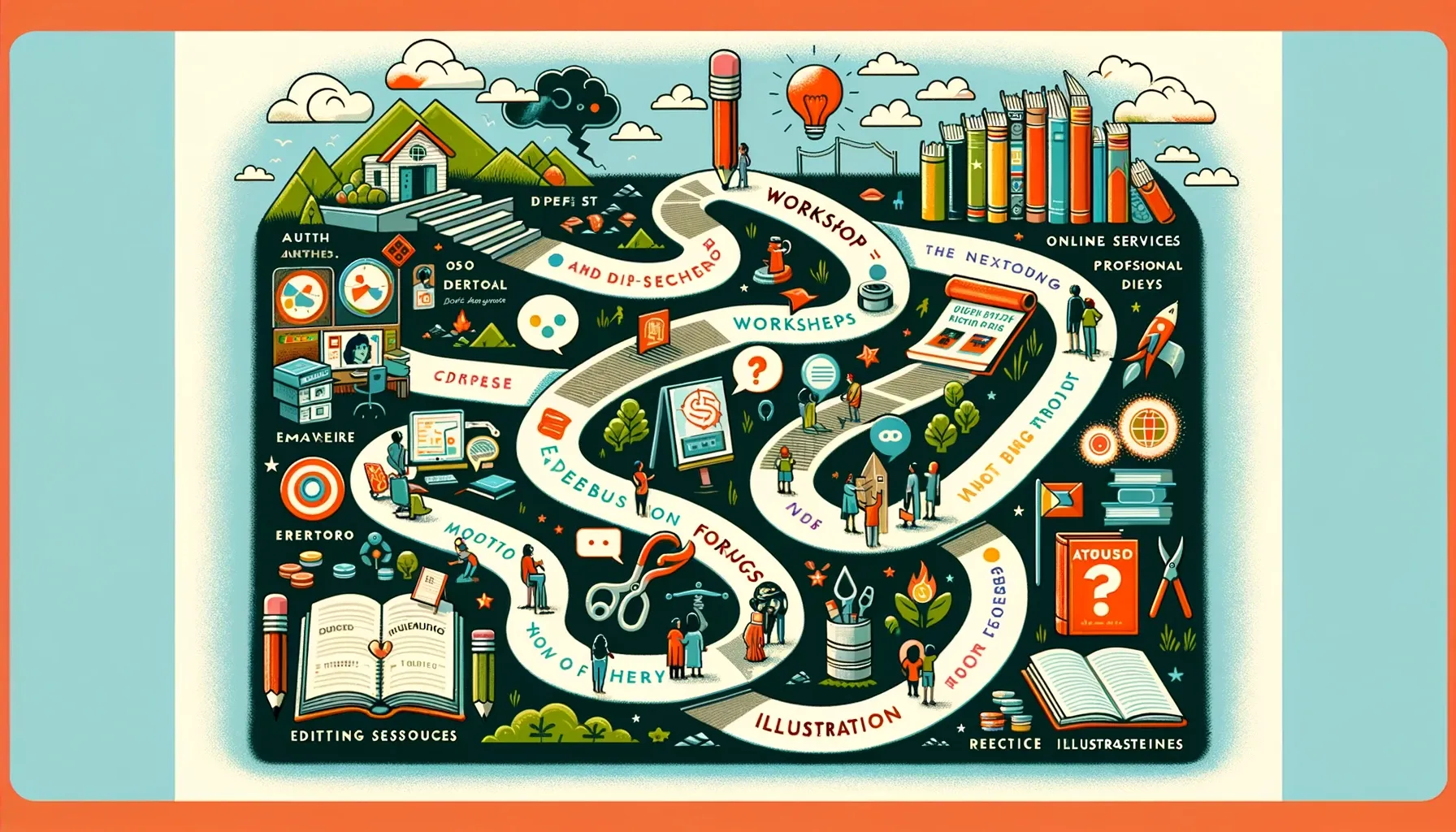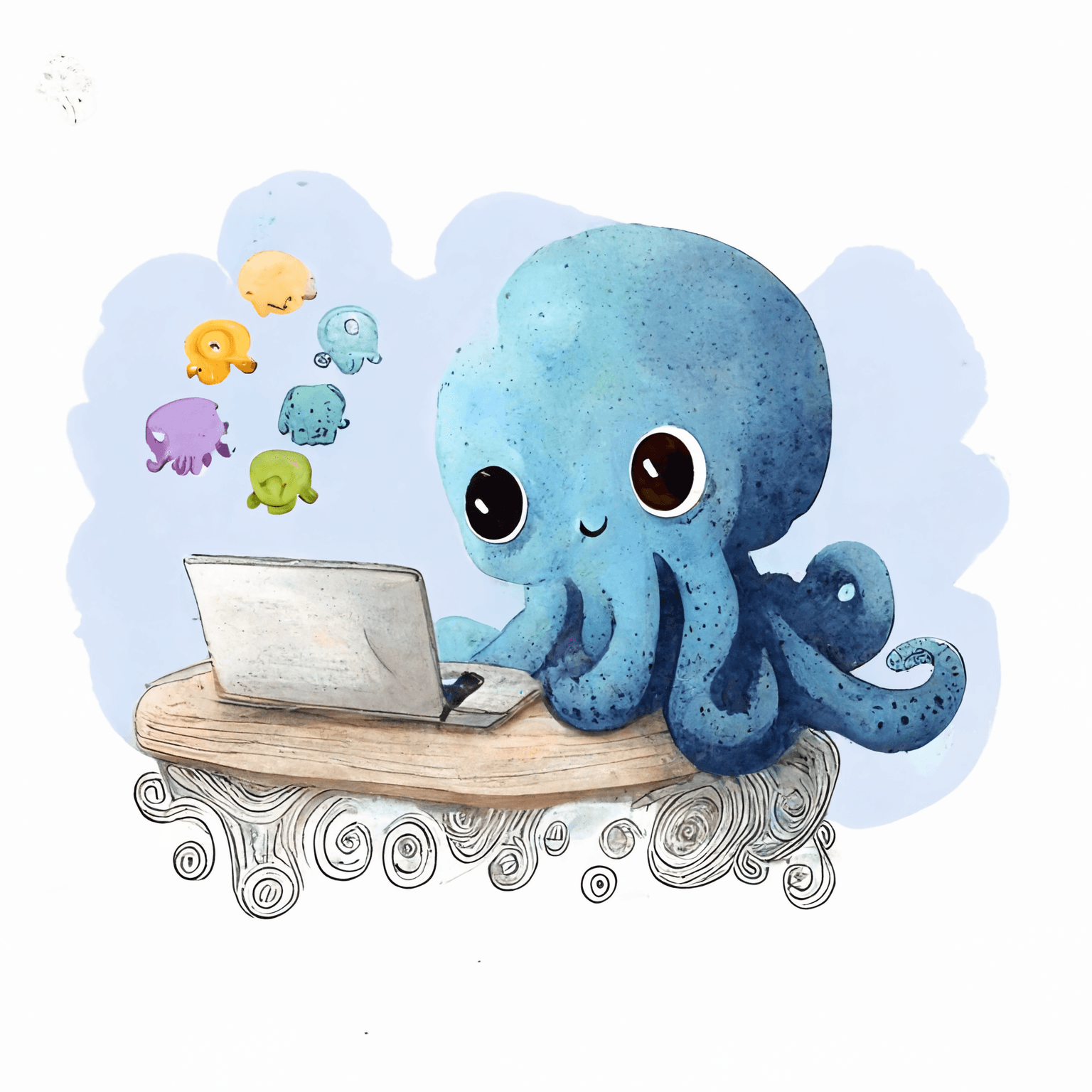Embarking on the journey to publish a children's book can often feel like navigating through a maze, with traditional publishing paths presenting numerous barriers to aspiring authors. "How to self-publish a children's book" is not merely a question—it's a beacon of hope for those looking to bypass industry gatekeepers and take control of their publishing destiny. This article unfolds the vibrant landscape of self-publishing, offering a comprehensive guide that illuminates every step from manuscript to marketplace. Self-publishing empowers authors with creative freedom, potentially faster time to market, and the possibility of higher royalties, making it an increasingly attractive option in the world of children's literature. Whether you're a first-time author or a seasoned writer seeking new avenues, this guide is designed to navigate you through the intricacies of self-publishing, ensuring your story finds its way into the hearts and hands of young readers worldwide.

Chapter 1: Understanding the Basics of Self-Publishing
Dive into the colorful world of self-publishing with us at Made Live, where your journey from a budding idea to a cherished children's book is both celebrated and supported. This chapter aims to lay the foundation for understanding what self-publishing entails, how it differs from traditional publishing routes, and shines a light on alternative routes like hybrid publishing - all while steering clear of the pitfalls associated with vanity publishers - so you can decide whether it's a worthwhile endeavor for your children's book project.
What is Self-Publishing?
Self-publishing is the term used to describe when authors publish their work independently, without the involvement of a traditional publishing house. It offers the freedom to publish your story your way. A path that empowers authors to take charge of every aspect of the book's journey - from the whisper of inspiration to the joy of sharing it with readers.
The scope of self-publishing has expanded significantly with the advent of digital technology, making it accessible to more authors than ever before. With tools and platforms designed to bring your book to a global audience, self-publishing is an accessible dream for authors ready to embrace both its challenges and rewards.
Traditional vs. Self-Publishing: Choosing Your Path
In the realm of book publishing, traditional and self-publishing routes offer different landscapes for your journey. Traditional publishing houses take the reins of editing, design, and distribution, sometimes providing the author with an advance and contributing to marketing efforts. This path can offer validation and support but requires trade-offs, like letting go of creative control and accepting lower royalties per book sold.
Self-publishing, in contrast, places you at the helm, offering higher royalties and complete creative freedom. This route demands a hands-on approach to marketing and distribution, suited for authors who cherish control and direct engagement with their audience.
Exploring Hybrid Publishing
Hybrid publishers blend elements of traditional and self-publishing, offering services under a fee or profit-sharing model. This route can provide additional support in areas like editing and marketing while allowing authors to retain some control over the publishing process.
Hot Tip: When considering hybrid publishing, look for transparency in fees, services, and rights retention to ensure it aligns with your goals.
A Word of Caution on Vanity Publishers
Vanity publishers, often masquerading as traditional or hybrid publishers, charge authors high fees to publish their book while offering little in return in terms of distribution, marketing, or editorial support. It's crucial to research and understand the terms and reputation of any publishing service you consider to protect your work and your wallet.
Looking for more on how to tell the difference between vanity publishers and a hybrid publishing company? Check out this IBPA article for more.
Is it worth it to self-publish a children’s book?
Embarking on the self-publishing journey brings a unique set of rewards and challenges. It offers unparalleled creative freedom, the joy of direct reader engagement, and the potential for higher per-book profits. Yet, it also demands a proactive approach to marketing, distribution, and the business side of books. For those willing to navigate these waters, self-publishing can be an incredibly fulfilling path.
As we move forward, remember that self-publishing isn't just about bringing a book to life; it's about embracing the journey, learning new skills, and connecting with a community of readers and authors alike. With Made Live, you're not alone on this adventure—we're here to guide, support, and celebrate with you every step of the way.
Still uncertain if self-publishing is for you?
Check out our article, The Benefits of Self-Publishing for Children's Picture Book Authors, for a deeper exploration why self-publishing might be the right publishing path for you.
Chapter 2: Crafting Your Story
Welcome to the heart of your children's book journey—crafting the story that will captivate young minds and linger in their memories. At Made Live, we understand that the essence of a memorable children's book lies in its ability to weave together engaging narratives, relatable characters, and themes that resonate on a personal level with its audience. Let's explore how you can create a story that not only entertains but also educates and inspires.
Tips for Writing a Captivating Children's Book
Creating a children's book that stands out begins with a spark of imagination and a deep understanding of your audience. Here are some tips to guide you:
- Embrace Simplicity: The beauty of a children's book often lies in its simplicity. Focus on a clear, concise narrative that conveys your message without overwhelming young readers.
- Be Vivid in Your Descriptions: Children have vivid imaginations. Use descriptive language that paints a picture and brings your story to life in the reader's mind.
- Incorporate a Moral or Lesson: Many successful children's books include a subtle moral or lesson. This can be a powerful way to connect with your audience and leave a lasting impact, but you must avoid coming across as preachy! Subtlety works wonders, here.
- Engage Through Repetition and Rhythm: Young readers often enjoy the predictability of repetition and rhythm. These elements can make your story more engaging and memorable.
- Test Your Story: Share your story with children in your target age group. Their reactions can provide invaluable insights and help you refine your narrative.
Developing Memorable Characters and Engaging Plots
Characters are the soul of your story, and the plot is the journey they embark on. Here’s how to make both elements shine:
- Create Relatable Characters: Children connect with characters who have relatable desires, challenges, or emotions. Consider what traits will make your characters resonate with young readers.
- Build an Engaging Plot: A compelling plot keeps pages turning. Introduce a problem or challenge early on, and let your characters grow as they navigate their way to a resolution.
- Use Conflict Creatively: Conflict doesn't always mean confrontation. It can be an internal struggle, a puzzle to solve, or a journey filled with obstacles, each offering opportunities for character development and plot advancement.
Want to read more about crafting characters and plot for children? Check out these articles:
The Importance of Age-Appropriate Language and Themes
Understanding your audience is crucial in children's literature. The language, themes, and even the length of your book should be tailored to the age group you're targeting:
- Language: Choose words that are appropriate for the developmental stage of your audience. For younger children, simple, clear language works best, while older children can handle more complexity and nuance.
- Themes: Select themes that are relevant and appropriate for your readers' age and experiences. Themes like friendship, adventure, family, and self-discovery are universally appealing.
- Engagement: Consider the attention span of your audience. Books for younger children tend to be shorter and more visually driven, while older children can engage with longer, more complex narratives.
For more on writing for your audience, check out our blog, Writing for a Target Audience: Tips for Crafting Children's Books.
Crafting the story for your children's book is a journey of exploration and creativity. By focusing on engaging narratives, relatable characters, and age-appropriate content, you'll create a book that not only entertains but also enriches the lives of your readers. Remember, at Made Live, we're here to support you every step of the way as you bring your unique vision to life.
Chapter 3: Illustrating Your Book
In the enchanting world of children's books, illustrations do more than just accompany text; they breathe life into stories, setting the imagination of young readers alight. At Made Live, we recognize the pivotal role illustrations play in storytelling, especially in children's literature. This chapter delves into the art of bringing your narrative to visual life, the journey of collaboration with illustrators, and the dance of balancing text with images for storytelling that captivates and delights.

The Role of Illustrations in Children's Books
Illustrations are the heartbeat of a children's book, offering visual narratives that complement and enhance the written word. They serve multiple roles:
- Visual Storytelling: Illustrations convey emotions, settings, and actions, often telling parts of the story that words cannot.
- Engagement: Vibrant and engaging artwork can capture the attention of young readers, drawing them into the story and holding their interest.
- Comprehension: For early readers, illustrations provide contextual clues that aid in understanding the text, making the reading experience both educational and enjoyable.
Finding and Collaborating with Illustrators
The journey to find the right illustrator for your book is a quest for a creative partner who can translate your vision into stunning visual art. Here's how to navigate this process:
- Research: Look for illustrators whose style resonates with the tone and theme of your story. Portfolios on social media, illustration directories, and children's book fairs are great places to start.
- Communication: Clear communication of your vision and expectations is key. Share your story, character descriptions, and any specific scenes you envision with potential illustrators to ensure alignment.
- Collaboration: Successful collaboration with an illustrator is built on mutual respect and open dialogue. Be open to their creative input—after all, they are experts in visual storytelling.
While Made Live incorporates AI-generated images for storyboarding, helping authors flesh out character imagery, scenes, and book layouts, it's crucial to remember these images are placeholders. AI-generated images, while useful for conceptualization, lack the copyright protection necessary for publication. They serve as a bridge to the final illustrations, crafted by your chosen illustrator, ensuring your book is both legally compliant and uniquely yours.
For more tips about children's book illustrations, check out our article, Illustrating Your Children's Book: Tips for Aspiring Authors.
Balancing Text and Images for Effective Storytelling
The synergy between text and illustrations is what makes a children's book truly magical. Achieving this balance involves:
- Narrative Harmony: Ensure that your text and illustrations tell the same story, complementing and enriching each other. Avoid redundancy unless it's stylistically intentional for emphasis.
- Pacing: Use illustrations to pace your story, allowing for moments of reflection, excitement, or discovery. The interplay between text and images should guide the reader through the narrative rhythm.
- Layout Considerations: Work with your illustrator and designer on the layout, considering how text and images will flow together on each page. The layout should facilitate an intuitive reading experience, especially for young readers.
Illustrations are not just decorations; they are an integral part of storytelling in children's books. By carefully selecting and collaborating with the right illustrator and thoughtfully balancing text and images, you can create a book that transcends the sum of its parts, offering young readers a gateway into the rich world of imagination and learning. Remember, at Made Live, we're here to support your creative journey, from the first word to the final brushstroke.
Chapter 4: Editing and Formatting Your Book
After the creative outpour of drafting your children's book comes the critical phase of editing and formatting—a stage where your manuscript transforms into a polished, reader-ready work. At Made Live, we understand the importance of this process in ensuring your book's success. This chapter will guide you through refining your manuscript, the nuances of preparing your book for various formats, and the art of selecting fonts and layouts that enhance readability and engagement.
The Editing Process: From Self-Edits to Professional Editors
Self-Editing
Begin with self-edits, focusing on coherence, pacing, and narrative structure. Read your manuscript aloud to catch awkward phrasing and ensure the story flows naturally. This stage is also about tightening your prose, eliminating unnecessary words, and ensuring clarity in your storytelling.
Beta Readers
Sharing your manuscript with beta readers, especially those who are part of your target audience or their caregivers, can provide invaluable insights into how your story resonates with readers.
Professional Editing
Investing in a professional editor is crucial. Editors offer different levels of service, from developmental editing, which addresses big-picture issues, to copyediting and proofreading, which focus on grammar, punctuation, and spelling errors. A professional editor not only polishes your manuscript but also provides an objective perspective that can elevate your story.
Formatting Your Book for Print and Digital Formats
Print Formatting
Print books require attention to margins, bleed, and gutter settings to ensure that text and illustrations are not cut off during the printing process. Consider the size and shape of your book—landscape, portrait, or square—and how this will affect the layout of your content.
Digital Formatting
E-books have different formatting requirements, with reflowable text that adapts to various screen sizes and devices. Ensure that your digital format is compatible with major e-readers and platforms, and pay special attention to how images are embedded to maintain their quality and placement relative to the text.
Choosing the Right Font and Layout for Readability
Font Selection
Choose fonts that are easy to read and appropriate for your audience's age group. For younger readers, simple, sans-serif fonts like Arial or Helvetica can be easier on the eyes. The font size should also be considered, with larger sizes often being more accessible for early readers.
Layout Considerations
The layout of your book should facilitate an effortless reading experience. For print, ensure adequate spacing between lines (leading) and around the margins. In digital formats, make sure text reflows smoothly and that links or interactive elements are easily navigable.
Readability and Engagement
Beyond basic readability, the font and layout should contribute to the overall engagement of your book. The layout can include dynamic elements like varied text sizes for emphasis or creative placement of text around images to draw the reader through the story.
Editing and formatting are where the technical meets the creative, ensuring that your story is not only told but experienced in the best possible way. By dedicating time and resources to these crucial steps, you ensure that your children's book is a pleasure to read, both visually and narratively. Remember, at Made Live, we're here to support you through every step of your publishing journey, ensuring that your book is ready to captivate and inspire young readers.
Chapter 5: Selecting a Self-Publishing Platform
Navigating the world of self-publishing platforms can feel like exploring a vast ocean of possibilities. Each platform offers its unique set of tools, benefits, and challenges, especially when it comes to publishing children's books. At Made Live, we're here to help you chart a course through these waters, ensuring you find the perfect platform to bring your children's book to its eager audience. Let's dive into an overview of popular self-publishing platforms, weigh their pros and cons, and outline how you can publish a children's book by yourself.
Overview of Popular Self-Publishing Platforms
Amazon Kindle Direct Publishing (KDP): KDP is one of the most popular choices for self-publishers, offering a wide reach and the option for both digital and print-on-demand books. It's particularly appealing for e-books, with a robust marketplace and various promotional tools.
IngramSpark: IngramSpark stands out for its extensive distribution network, making your book available to bookstores and libraries around the world. It offers print-on-demand services for both paperback and hardcover editions, which is a significant advantage for children's books.
Barnes & Noble Press: This platform is tailored for authors looking to sell through Barnes & Noble's online and physical stores. It offers print and digital publishing options, with competitive royalties and promotional opportunities.
Blurb: Blurb is known for its high-quality print options and creative freedom, making it a great choice for picture-heavy children's books. It also offers distribution services through Amazon and Ingram.
Pros and Cons of Each Platform with a Focus on Children's Books
Amazon Kindle Direct Publishing (KDP)
- Pros: Wide reach, high royalties, and user-friendly interface. KDP Select program offers additional promotional opportunities.
- Cons: Competitive marketplace can make it challenging to stand out. Limited control over pricing and discounts.
IngramSpark
- Pros: Wide distribution network, including bookstores and libraries. Offers hardcover options, which are popular for children's books.
- Cons: Setup and revision fees. Requires a bit more technical know-how to navigate.
Barnes & Noble Press
- Pros: Direct access to Barnes & Noble bookstores and online marketplace. No setup fees.
- Cons: Limited distribution outside of Barnes & Noble.
Blurb
- Pros: High-quality print options and creative control over design. Good for visually driven books.
- Cons: Higher printing costs and less extensive distribution network.
How Can I Publish a Children’s Book by Myself?
Publishing a children's book independently involves several key steps, regardless of the platform you choose:
- Prepare Your Manuscript and Illustrations: Ensure your text and illustrations are polished and ready for publication. This might involve professional editing and design services.
- Choose Your Platform: Consider your goals, budget, and the specific needs of your children's book. Do you prioritize wide distribution, print quality, or creative control? Select the platform that aligns with your priorities.
- Set Up Your Account and Create Your Book: Follow the platform's guidelines to upload your manuscript and cover design, set your book's price, and choose distribution channels.
- Publish and Promote: Once your book is published, focus on marketing and promotion to reach your target audience. Utilize social media, author websites, and community events to spread the word about your book.
Want to read about tools and software that can make the self-publishing process faster and easier? Check out our article, From Manuscript to Masterpiece: The Top Software Tools for Self-Publishing Your Book.
Self-publishing a children's book is an empowering journey that puts you in control of your creative vision. By carefully selecting the right platform and understanding the steps involved, you can successfully navigate the self-publishing process and share your story with the world. Remember, at Made Live, we're here to support you at every step, offering the tools and guidance you need to make your publishing dreams a reality.
Chapter 6: Setting the Price and Publishing Your Book
Publishing your children's book is a milestone moment on your journey as an author. It's where your creative vision finally takes shape in the world. At Made Live, we understand the importance of this phase, from setting the right price to navigating the publishing process and protecting your work. This chapter will guide you through these crucial steps, ensuring your book not only reaches its audience but also achieves the recognition and reward it deserves.
Strategies for Pricing Your Children's Book
- Know Your Costs: Understand the costs involved in producing your book, including illustrations, editing, formatting, and printing. This will be your baseline for setting a price that ensures profitability.
- Research the Market: Look at similar children's books in your genre and age category. Pricing your book competitively while ensuring it reflects its value is key to attracting buyers.
- Consider Formats: E-books typically cost less than printed versions. If offering multiple formats, price them accordingly, keeping in mind the perceived value and production costs of each.
- Flexibility: Be prepared to adjust your pricing based on sales performance and feedback. Promotions and discounts can also be effective strategies to increase visibility and sales.
The Publishing Process: A Step-by-Step Guide
- Finalize Your Manuscript and Illustrations: Ensure your content is professionally edited and your illustrations are ready.
- Choose a Self-Publishing Platform: Based on your research and the needs of your project, select the platform that best suits your book.
- Create Your Book Listing: Upload your manuscript and cover design, fill out your book's details (title, description, keywords), and set your price.
- Publish: Follow the platform's process to publish your book. This may involve reviewing digital proofs and confirming distribution settings.
- Promote: Once your book is live, implement your marketing and promotion plan to reach your audience and drive sales.
ISBNs and Copyright: Protecting Your Work
- ISBNs: An International Standard Book Number (ISBN) is essential for distribution and sales tracking. While some platforms offer free ISBNs, purchasing your own (through agencies like Bowker in the U.S.) gives you greater control over your book's publishing rights.
- Copyright: Copyright protection is automatic upon creation of your work. However, registering your copyright (e.g., with the U.S. Copyright Office, or designated office in your country) provides legal advantages, including the ability to pursue infringement cases in court.
How Much Does It Cost to Self-Publish a Children’s Book?
The cost of self-publishing a children's book can vary widely based on several factors:
- Illustrations: Custom illustrations are often the most significant expense, ranging from a few hundred to several thousand dollars, depending on the artist's experience and the number of illustrations.
- Editing and Formatting: Professional editing services can cost anywhere from a few hundred to over a thousand dollars, while formatting services vary depending on the complexity of your book.
- Printing: Print-on-demand services offered by self-publishing platforms eliminate upfront printing costs, but per-unit costs can affect your pricing and profitability.
- Marketing: Budget for promotional materials, advertising, and potentially a website or book launch event.
In total, the cost to self-publish a children's book can range from a few hundred to several thousand dollars. Careful planning and budgeting are essential to manage expenses while ensuring the quality of your book.
Publishing your children's book is a journey filled with decisions that shape its success. By strategically pricing your book, understanding the publishing process, and protecting your work, you're setting the stage for a rewarding publishing experience. Remember, Made Live is here to support you through every step, offering the resources and guidance you need to bring your story to life.
Chapter 7: Marketing Your Children's Book
Marketing your children's book is as crucial as the story itself. It's about creating connections, sparking interest, and ensuring your book finds its way into the hands of eager young readers and their caregivers. At Made Live, we believe in empowering authors with effective marketing strategies that highlight their unique stories and build lasting relationships with their audience. This chapter covers the essentials of building an author brand, leveraging social media, employing creative marketing tactics, and engaging with schools, libraries, and bookstores.

Building an Author Brand and Online Presence
Define Your Brand: Your author brand is a reflection of you and your work. Consider what themes, messages, or values you want to be associated with and how you can communicate these through your branding.
Create a Professional Website: Your website serves as the hub for your online presence, offering information about your books, your author journey, and how readers can connect with you.
Develop a Content Strategy: Share valuable content related to your book's themes, the writing process, or insights into your personal journey. This can include blog posts, newsletters, and behind-the-scenes peeks.
Utilizing Social Media to Reach Your Audience
Choose the Right Platforms: Focus on platforms where your target audience, including parents, teachers, and librarians, is most active. Instagram, Facebook, and Pinterest are excellent for visual content, while Twitter can be great for engaging in conversations.
Engage Authentically: Social media is about building community. Post regularly, respond to comments, and engage with your followers' content. Share stories, insights, and sneak peeks to create genuine connections.
Leverage Hashtags and Trends: Use relevant hashtags to increase the visibility of your posts. Participate in trending topics and challenges when appropriate to reach a broader audience.
Creative Marketing Strategies for Children's Books
Host Virtual Readings: Offer live readings of your book on social media or through webinar platforms. This can be an excellent way to engage with young readers and showcase your storytelling skills.
Create Interactive Content: Develop activities, worksheets, or challenges related to your book's themes. This not only adds value but also encourages interaction and sharing.
Collaborate with Influencers: Partner with family-focused influencers or book bloggers who can introduce your book to their followers. Ensure their audience aligns with your target readership for maximum impact.
Engaging with Schools, Libraries, and Children's Bookstores
School Visits and Workshops: Offer to host storytime sessions or creative writing workshops in schools. This can be a powerful way to engage directly with your audience and build interest in your book.
Library Events: Libraries often host author readings and book events. Reach out to local libraries to see if there are opportunities to feature your book in their programs.
Bookstore Partnerships: Independent bookstores are invaluable allies. They may offer opportunities for book signings, readings, or to stock your book on their shelves. Building relationships with bookstore owners can open doors to local marketing opportunities.
Marketing your children's book requires creativity, persistence, and a willingness to explore various channels to connect with your audience. By establishing a strong author brand, engaging with readers online and in-person, and employing creative marketing tactics, you can create a buzz around your book and inspire a love for reading in young hearts. Remember, every marketing effort is a step towards sharing your story with the world, and Made Live is here to support you on this exciting journey.
Chapter 8: Distribution and Sales Channels
The journey of your children's book from manuscript to the hands of eager readers involves strategic decisions about distribution and sales. In the self-publishing realm, understanding and maximizing your distribution options can significantly impact your book's success. This chapter will navigate the distribution landscape for self-published authors, explore how to make the most of online and offline sales channels, delve into the opportunities presented by book fairs and festivals, and discuss the potential earnings from publishing a children's book.

Understanding the Distribution Options for Self-Published Authors
Direct Distribution Platforms: Platforms like Amazon Kindle Direct Publishing (KDP), IngramSpark, and Barnes & Noble Press allow you to directly list and sell your book. Each platform has its reach, with some offering extensive distribution networks that include online retailers, bookstores, and libraries.
Print on Demand (POD): POD services enable you to sell physical books without the need for upfront printing costs or inventory management. When a book is ordered, it's printed and shipped directly to the customer, making it a cost-effective and low-risk option.
E-book Distribution: Digital books offer a convenient way to reach a global audience. Platforms like KDP, Apple Books, and Kobo provide access to vast markets of e-book readers.
Maximizing Online and Offline Sales Channels
Online Marketplaces: Beyond the major platforms, consider listing your book on additional online marketplaces like Etsy for special editions or signed copies. Utilize your website or social media channels to sell directly to your audience.
Local Bookstores and Retailers: Establish relationships with local bookstores and retailers. Independent stores, in particular, may be open to stocking self-published books, especially those with local interest or themes.
Schools and Libraries: Schools and libraries can be significant channels for children's books. Offer your book to local and school libraries and consider donating copies to get your book in front of young readers.
Navigating the World of Book Fairs and Children's Book Festivals
Participating in book fairs and festivals can offer valuable exposure and networking opportunities. These events allow you to showcase your book, connect with readers, and meet other authors and industry professionals.
- Research Events: Look for events that cater to children's literature and align with your book's theme or target age group.
- Prepare Your Pitch: Have a clear, engaging description of your book ready, along with promotional materials like bookmarks or flyers.
- Engage Attendees: Be prepared to read excerpts, sign books, and engage with attendees in meaningful ways.
How Much Money Can You Make Publishing a Children’s Book?
The earnings from publishing a children's book vary widely based on factors like the book's price, distribution channels, and marketing efforts. Self-published authors typically earn higher royalties per book than traditionally published authors, but they also shoulder the upfront costs of production and marketing.
- Royalties: Understand the royalty structure of each platform or channel you use. Print on demand and e-book platforms often offer calculators to estimate your earnings based on your book's price and sales volume.
- Volume vs. Margin: Consider whether you aim to maximize volume (with a lower price point) or margin (with a higher price point). Your strategy may evolve based on your book's reception and sales data.
- Ancillary Revenue: Beyond book sales, consider other revenue streams like merchandise, speaking engagements, or writing workshops.
While it's challenging to predict exact earnings, a well-marketed book with broad distribution can generate significant income over time. Success in self-publishing often comes from a combination of quality content, strategic marketing, and persistence. Remember, every book has its unique path to success, and Made Live is here to support you in exploring all avenues to bring your story to the world.
Chapter 9: Collecting Reviews and Feedback
In the vibrant world of children's literature, reviews and feedback are golden. They not only serve as a beacon for potential readers but also offer invaluable insights for authors. For self-published authors, in particular, reviews can significantly impact visibility and credibility. This chapter will explore the importance of reviews for self-published children's books, strategies to encourage readers to leave reviews, and how to utilize feedback to both improve and promote your book effectively.
The Importance of Reviews for Self-Published Children's Books
Boost Visibility: Reviews contribute to your book's discoverability. Many online platforms use algorithms that favor books with higher numbers of reviews, increasing your chances of appearing in search results and recommended lists.
Build Credibility: For self-published authors, reviews act as social proof, reassuring potential readers that your book is worth their time and money. Positive reviews can significantly enhance your book's appeal to parents, educators, and young readers.
Influence Purchasing Decisions: Reviews often play a crucial role in a consumer's decision-making process. A well-articulated review can highlight your book's strengths and themes, persuading others to give it a chance.
How to Encourage Readers to Leave Reviews
Directly Ask Your Readers: Don't hesitate to ask your readers for reviews. A simple request at the end of your book, in your newsletters, or through your social media channels can prompt satisfied readers to share their thoughts.
Provide Easy Instructions: Make the process of leaving a review as straightforward as possible. Share direct links to where they can leave reviews and offer brief guidelines on what they might include in their feedback.
Offer Incentives: Consider offering incentives for leaving a review, such as entry into a giveaway, a free downloadable activity related to your book, or a discount on future purchases. Ensure that incentives comply with the review policies of the platforms you're targeting.
Utilizing Feedback to Improve and Promote Your Book
Incorporate Constructive Criticism: Not all feedback will be glowing, but constructive criticism can be a goldmine for improvement. Use negative reviews to identify areas for enhancement in your current or future books.
Highlight Positive Reviews in Your Marketing: Share glowing reviews on your website, social media, and promotional materials. Positive words from satisfied readers can be a powerful marketing tool.
Engage with Your Reviewers: Responding to reviews, when possible, can foster a sense of community and show that you value your readers' opinions. This engagement can turn casual readers into loyal fans.
Collecting reviews and feedback is an ongoing process that extends far beyond your book's launch. By actively seeking out reviews, thoughtfully responding to feedback, and leveraging positive reviews in your marketing efforts, you can enhance your book's visibility, credibility, and appeal. Remember, each review is an opportunity to grow and connect more deeply with your audience. At Made Live, we're here to support you in harnessing the power of reviews to elevate your self-publishing journey.
Chapter 10: Scaling Your Success
After publishing your children's book, the journey doesn't end—it merely evolves. Scaling your success means building on your achievements, exploring new avenues for your stories, and extending your reach to captivate more readers. This chapter delves into the opportunities awaiting beyond the initial publication, from diversifying your book's formats to transforming your story into a beloved franchise and leveraging your book for educational and commercial opportunities.

Exploring Additional Book Formats
Audiobooks: The popularity of audiobooks has soared, offering a fantastic way to reach auditory learners and busy families. Narrating your children's book or hiring a professional voice actor can bring your story to life in a new dimension, making it accessible during car rides, bedtime, or even as a classroom tool.
Interactive eBooks: Technology has opened up incredible possibilities for enriching storytelling. Interactive eBooks can include animations, sound effects, and interactive elements that engage young readers, making your story an immersive experience. Platforms like Apple Books and Kindle Direct Publishing offer tools to create and distribute interactive eBooks.
Apps: Developing an app based on your book can offer an interactive and educational extension of your story. From simple story-based games to educational activities that complement your book's themes, apps can significantly enhance engagement and offer an additional revenue stream.
Sequels and Series: Expanding Your Book into a Franchise
Building on the world you've created with sequels or developing a series can turn a standalone story into a beloved universe that children return to time and again. Consider the following:
- Character Development: Deepen the connection readers have with your characters by exploring their adventures further or introducing new challenges they must overcome.
- World Expansion: Each new book offers the chance to explore different aspects of your story's universe, introducing new settings, characters, and themes.
- Cross-Promotion: Each book in a series or franchise can help promote the others, creating a self-sustaining cycle of discovery and engagement among readers.
Leveraging Your Book for Workshops, Speaking Engagements, and Merchandise
Educational Workshops: Your book can serve as the foundation for workshops that explore its themes, craft, or the writing process itself. Schools, libraries, and community centers can be venues for these enriching experiences, positioning you as an authority and advocate for reading and creativity.
Speaking Engagements: Share your journey, the lessons learned, and the joys of writing for children at conferences, literary festivals, and educational events. Speaking engagements not only spread the word about your book but also establish your voice in the literary community.
Merchandise: High-quality, book-themed merchandise can extend the life of your story beyond the pages. From plush toys and puzzles to apparel and stationery, merchandise can enhance readers' connection to your story and characters, providing additional revenue streams.
Scaling your success as a self-published children's book author means embracing the myriad opportunities to grow your brand, reach more readers, and enrich the literary landscape for young audiences. By diversifying your book's formats, expanding your story into sequels or a series, and leveraging your book for educational and commercial opportunities, you can build a lasting legacy that inspires and entertains for generations. Remember, at Made Live, we're here to support you every step of the way as you explore these exciting avenues for growth and impact.
Conclusion: Bringing Your Children's Book to Life
Embarking on the journey to self-publish a children's book is an adventure filled with creativity, learning, and fulfillment. As we've explored throughout this guide, transforming your idea into a tangible book that can inspire and entertain young readers involves several key steps, each with its own challenges and rewards. Let's recap these essential milestones and offer some final words of encouragement and advice to aspiring children's book authors.
Recap of Key Steps to Successfully Self-Publish a Children's Book
- Understanding the Basics of Self-Publishing: Familiarize yourself with the self-publishing landscape, including the differences between self-publishing and traditional routes, and the potential benefits and challenges of going it alone.
- Crafting Your Story: Develop a captivating narrative with memorable characters, engaging plots, and age-appropriate language and themes. Remember, the heart of your book lies in its ability to connect with young readers.
- Illustrating Your Book: Collaborate with illustrators to bring your story to life visually. Illustrations are not just decorations but integral parts of storytelling in children's literature.
- Editing and Formatting Your Book: Invest in professional editing to polish your manuscript and pay attention to formatting for both print and digital formats to ensure a seamless reading experience.
- Selecting a Self-Publishing Platform: Choose the right platform based on your book's needs, considering factors like distribution, royalties, and the types of formats you wish to offer.
- Setting the Price and Publishing Your Book: Strategically price your book by understanding your costs and researching the market. Navigate the publishing process with care, securing ISBNs and protecting your copyright.
- Marketing Your Children's Book: Build an author brand and online presence, utilize social media, employ creative marketing strategies, and engage with schools, libraries, and bookstores to reach your audience.
- Distribution and Sales Channels: Maximize both online and offline sales channels, and explore the world of book fairs and children's book festivals to widen your reach.
- Collecting Reviews and Feedback: Encourage reviews to boost visibility and credibility, and use feedback to improve and promote your book.
- Scaling Your Success: Consider additional book formats, sequels, and leveraging your book for workshops, speaking engagements, and merchandise to expand your impact and income.

Encouragement and Final Tips for Aspiring Children's Book Authors
The path to self-publishing a children's book is both exhilarating and demanding. It requires a blend of creativity, perseverance, and a willingness to learn and adapt. As you embark on this journey, remember:
- Stay True to Your Vision: Your unique voice and story have the power to inspire and delight young readers. Stay true to the vision that drives you, even when faced with challenges.
- Embrace the Community: The world of children's literature is filled with supportive authors, illustrators, and readers. Engage with this community for support, inspiration, and collaboration.
- Never Stop Learning: The landscape of self-publishing is ever-evolving. Stay informed about industry trends, marketing strategies, and new technologies that can enhance your publishing journey.
- Celebrate Every Milestone: From completing your manuscript to receiving your first reader review, each step forward is an achievement worth celebrating.
Remember, the journey of bringing your children's book to life is a testament to your dedication to storytelling and your commitment to enriching the lives of young readers. At Made Live, we're honored to support you on this journey, offering the tools, resources, and community you need to turn your dream into reality. Here's to the stories you'll tell and the lives you'll touch through the magical world of children's books.
Additional Resources
Embarking on the self-publishing journey equips you with not just a story to tell but also a vast landscape of resources to explore and communities to join. This journey, while rewarding, can be complex and multifaceted, especially in the children's book market. To support your ongoing growth and success, we've compiled a list of additional resources, including recommended reading, professional services, and communities for networking and support. These resources are designed to deepen your understanding, enhance your skills, and connect you with like-minded individuals in the world of children's literature.

Recommended Reading and Resources for Further Learning
- The Business of Writing for Children by Aaron Shepard: An insightful guide into the nuances of writing, publishing, and marketing children's books.
- Writing Picture Books by Ann Whitford Paul: A comprehensive manual on the art of crafting engaging and memorable picture books for children.
- The Creative Penn Podcast by Joanna Penn: Offers valuable insights into writing, self-publishing, book marketing, and creative entrepreneurship.
- SCBWI (Society of Children's Book Writers and Illustrators) Discussion Board: A rich resource for articles, webinars, and workshops on various aspects of children's book publishing.
Professional Services for Self-Publishing Authors
- Reedsy: Connects authors with professional editors, designers, and marketers who specialize in children's literature.
- Fiverr and Upwork: Platforms to find freelance professionals for book illustrations, editing, formatting, and marketing services.
- IngramSpark: Offers comprehensive self-publishing services including printing, distribution, and marketing for both print and digital books.
Communities and Forums for Networking and Support
- SCBWI (Society of Children's Book Writers and Illustrators): A global community offering events, critiques, and networking opportunities for children's book authors and illustrators.
- Goodreads Author Program: A platform to promote your books, connect with readers, and join author groups for support and advice.
- KDP Community: Amazon's Kindle Direct Publishing forum where authors share advice, experiences, and support for self-publishing endeavors.
- Children's Book Authors and Illustrators Groups on Facebook: A vibrant community for sharing resources, seeking feedback, and networking with peers in the children's book industry.
- #WritingCommunity on Twitter: A hashtag connecting writers across genres and publishing paths, offering daily support, advice, and camaraderie.
- #KidLit Threads on Threads: A hashtag connecting children's picture book writers - from novice to pro - offering a growing community of supportive and helpful authors and publishing professionals with an interest in cihldren's books.
As you continue on your self-publishing journey, these resources, services, and communities can provide the guidance, support, and inspiration you need to navigate the challenges and celebrate the successes. Remember, the path to publishing a children's book is a journey of continuous learning and growth. At Made Live, we're here to support you every step of the way, offering the tools and resources you need to bring your imaginative stories to the eager hands of young readers. Here's to your success and the adventures that await in the pages of your books.




